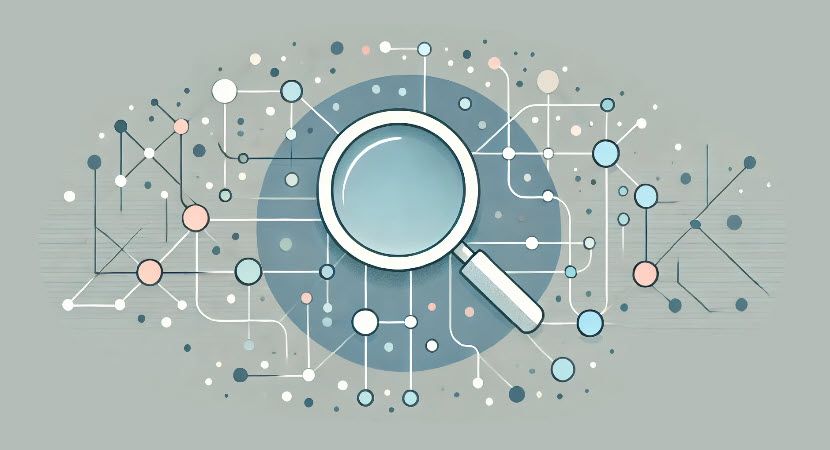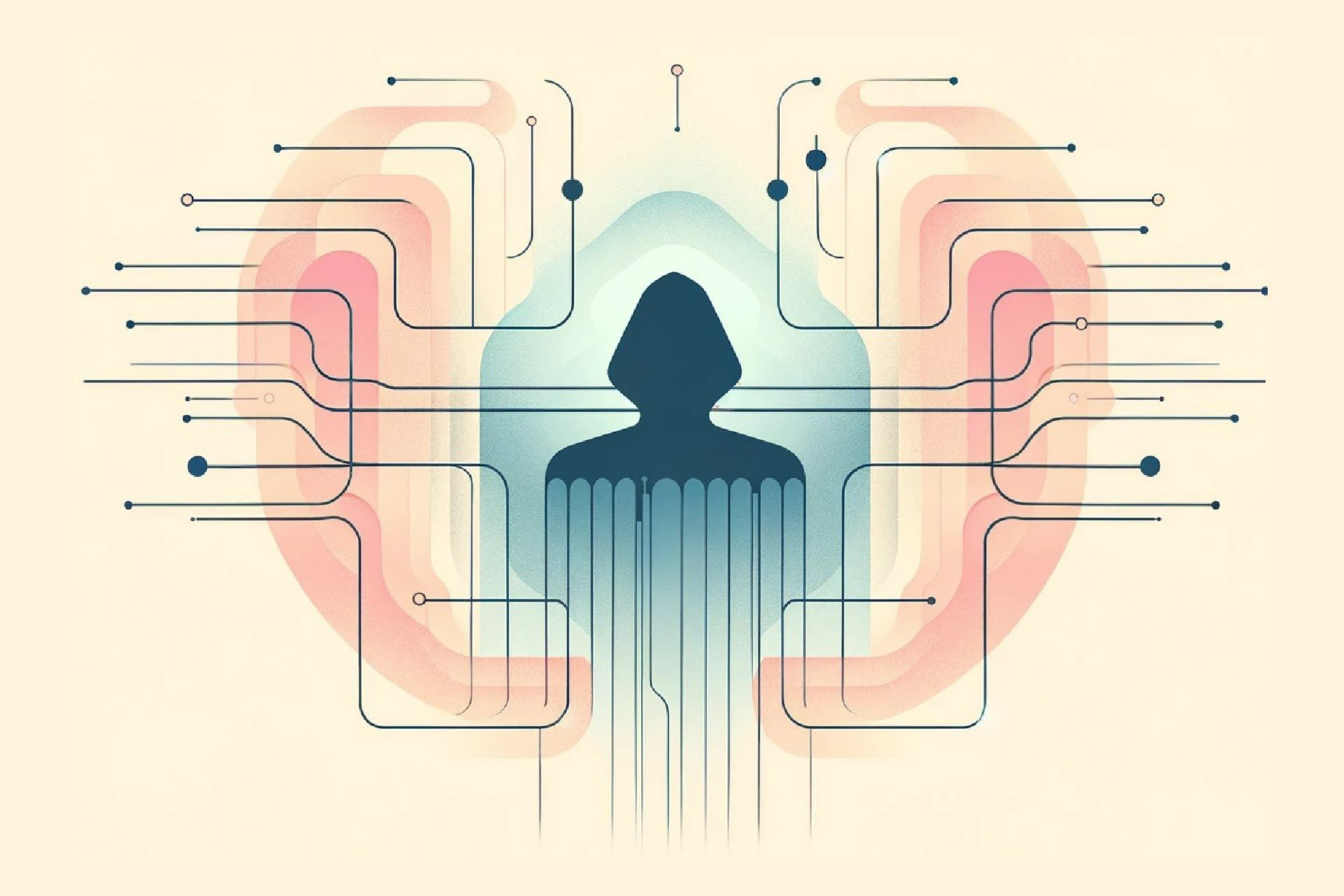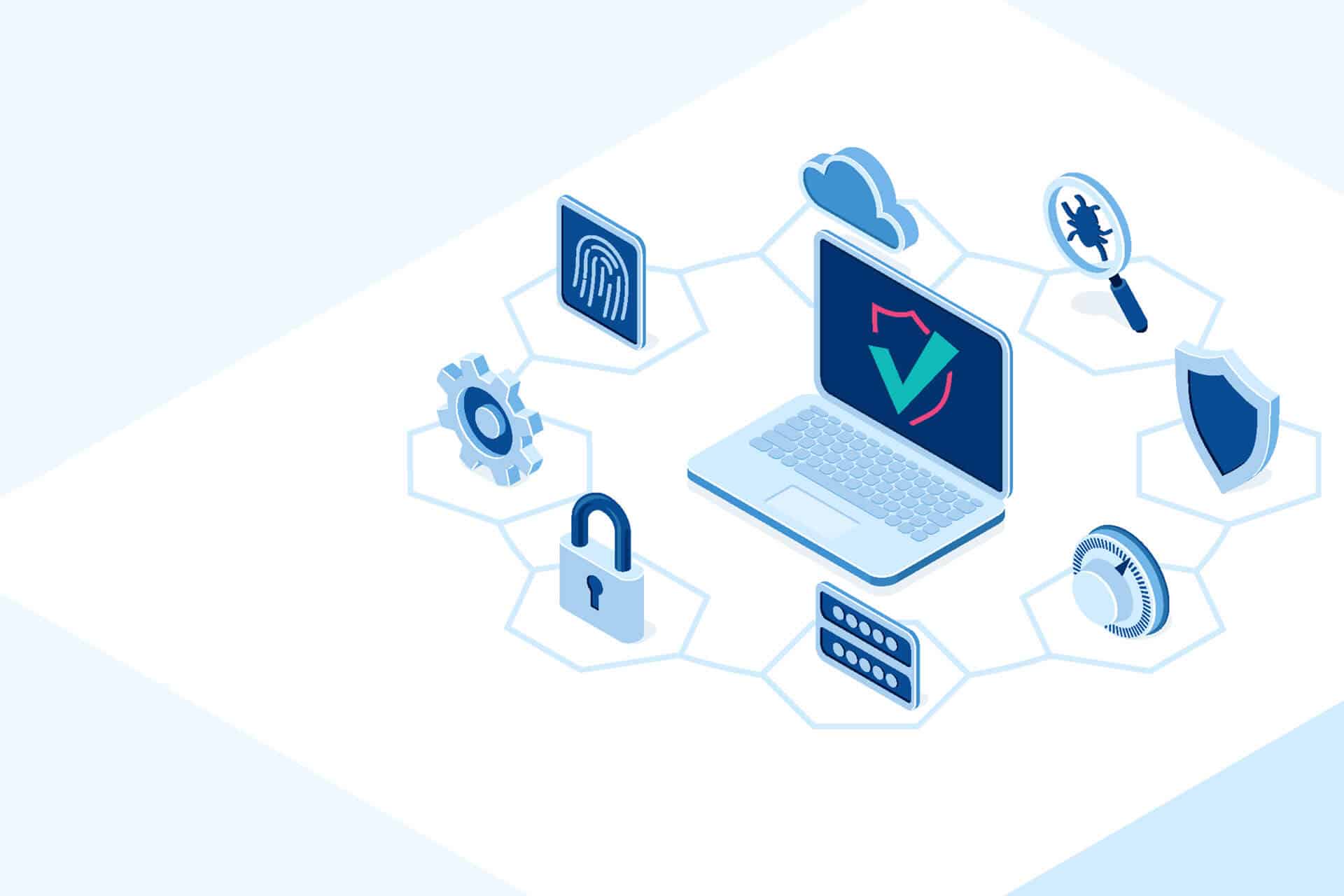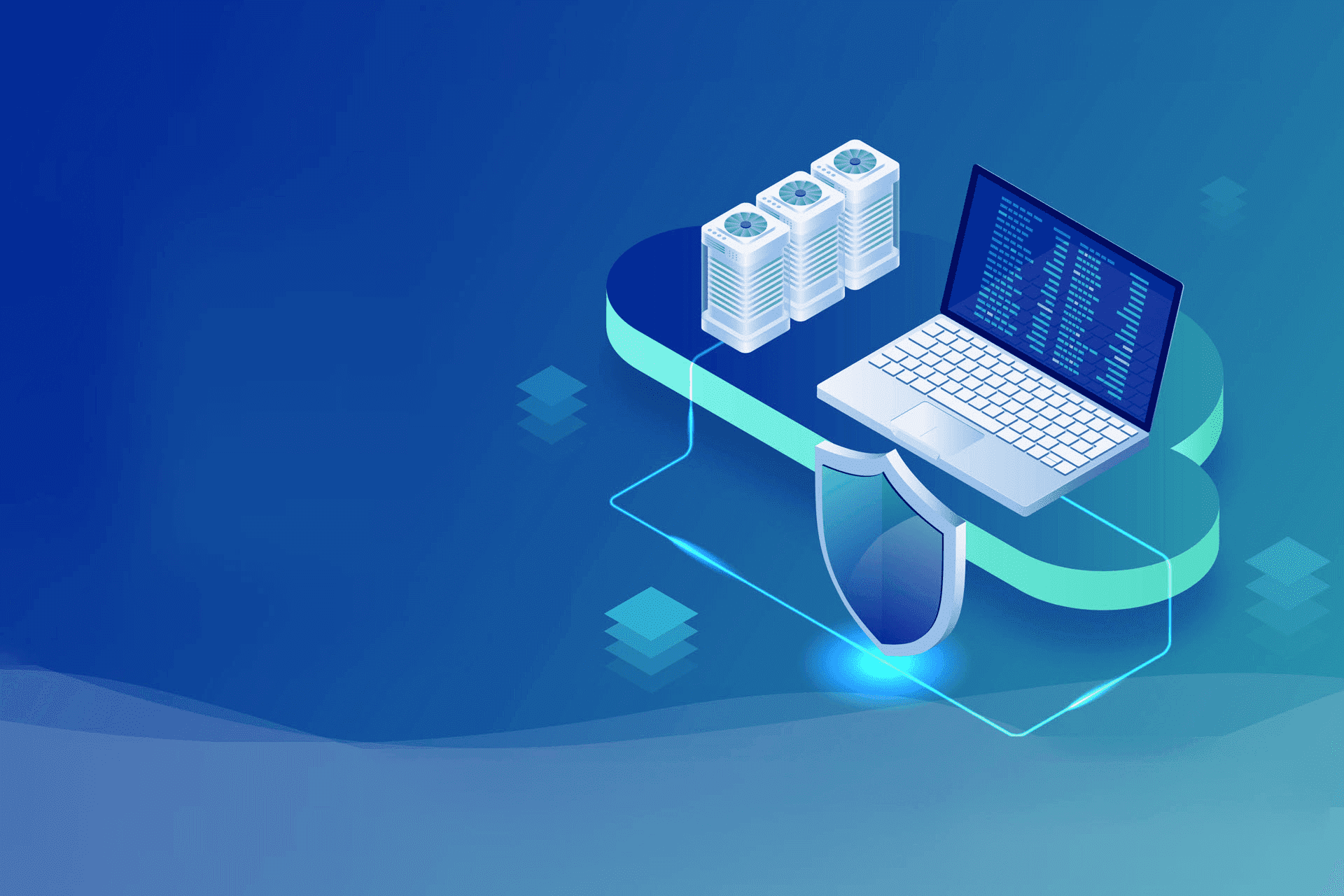Cyber threats are on the rise, targeting businesses of industries and sizes. Ensuring your network's security is essential to avoiding financial and reputational damage. A network security audit systematically identifies vulnerabilities, protects sensitive data, and creates a more resilient IT environment.
This article will guide you through the essentials of protecting your organization with network security audits. It also includes a comprehensive checklist to help you assess and improve your security.

What Is a Network Security Audit?
A network security audit is a technical evaluation of a company’s network infrastructure. It examines policies, applications, and operating systems to detect security vulnerabilities and risks.
The audit analyzes five critical aspects of a network:
- Network security. It evaluates the measures to protect data and resources from unauthorized access, malware, and cyber attacks.
- Control implementation. It assesses the effectiveness of security controls such as firewalls, intrusion detection systems, and encryption protocols.
- Network availability. It measures the network's reliability, uptime, and ability to maintain service levels under various conditions.
- Management practices. It reviews the protocols and procedures for network management, including patch management, identity and access management, and incident response plans.
- Overall performance. It analyzes the network's efficiency, throughput, latency, and overall user experience.
You can conduct a network security audit manually or through automated processes. Automated audits often rely on Computer-Assisted Audit Techniques (CAAT) software, which uses advanced algorithms and tools to analyze the network.
This software can also scan for compliance with security policies, detect anomalies, and generate detailed reports on the network's health and security posture.
Why Is a Network Security Audit Important?
Here are the benefits of network security audits:
- Identifying vulnerabilities. Audits pinpoint weak spots before attackers can exploit them.
- Enhancing data protection. Audits improve security and protect sensitive information from unauthorized access and data breaches.
- Compliance assurance. Network security audits ensure compliance with data security and privacy laws, such as HIPAA, GDPR, and PCI DSS.
- Optimizing network performance. Security audits uncover issues that affect network performance. Addressing these issues leads to more efficient operations and better resource allocation.
- Building trust. Demonstrating a commitment to security builds trust with clients, customers, and partners, who feel confident in the organization’s ability to protect their data.
- Enhanced incident response. Regular audits help organizations update and refine their incident response plans.
- Strategic planning. Network security audits provide insights that inform strategic planning, helping organizations prioritize security investments and technology upgrades.
- Third-party risk management. Security audits can extend to third-party vendors, ensuring their security practices meet the organization’s standards.

Who Performs a Network Security Audit?
Depending on the scope, complexity, and organizational requirements, various entities can perform a network security audit. Each type of auditor brings different strengths to the process, and organizations might use a combination of teams to achieve a complete evaluation of their network security.
Here is who typically performs network security audits:
- Internal audit team. Many organizations have an internal audit department that conducts regular security reviews. These teams are familiar with the company’s infrastructure and operational practices, which is advantageous for ongoing compliance and monitoring.
- External audit firms. Specialized cybersecurity firms often perform external audits. They provide an objective assessment, bringing expertise that can identify vulnerabilities an internal team might overlook.
- IT security consultants. Independent consultants with cybersecurity expertise can perform network security audits. They offer a tailored approach, focusing on specific areas as requested by the organization.
- Regulatory compliance teams. Organizations in heavily regulated industries are often subject to periodic and mandatory external audits to ensure compliance with standards.
- Managed Security Service Providers (MSSPs). Companies can contract MSSPs to manage their security needs, including regular network security audits.

How Often Should Network Security Audits Be Performed?
Network security audits are typically conducted annually or biannually. However, organizations in sectors with high data sensitivity may opt for monthly or quarterly audits.
The decision on how often to perform a network security audit also depends on the scope of the systems and applications that need review. While quarterly or monthly audits might strain the resources of smaller companies or startups, larger organizations with extensive data management needs can justify and support more frequent checks.
Additionally, the complexity of your systems and the nature of the stored data play a vital role in determining audit frequency. High-risk data requires more regular audits to mitigate potential threats, whereas more complex systems should be audited less frequently due to the considerable time and resources required.

Network Security Audit Checklist
If you opt for in-house testing, the network security audit checklist below will help you get started. It is editable, so skip the steps that do not apply to your organization.
1. Define the Scope of the Audit
Identify all devices on your network, including the operating systems they use. The audit should account for both managed devices (those belonging to the organization) and unmanaged devices (those belonging to visiting guests or bring-your-own devices). Once you know the endpoints, define a security perimeter to keep out unwanted software, ensuring it covers all access layers: wired, wireless, and VPN connections.
2. Determine Threats
List potential threats to the security perimeter, such as:
- Malware (worms, Trojan horses, spyware, and ransomware).
- Employee exposure (phishing attacks and social engineering).
- Malicious insider attacks (misuse of sensitive information).
- DDoS (Distributed Denial of Service) attacks.
- Attacks on BYOD and IoT devices.
- Physical breaches.
Understanding these threats helps you assess system resilience more effectively.
3. Review and Edit Internal Policies
Evaluate internal protocols for flaws. Key policies to review include:
- Acceptable use policy.
- Network security policy.
- Internet access policy.
- Remote access policy.
- BYOD policy.
- Encryption policy.
- Privacy policy.
- Email and communications policy.
Address any shortcomings, enhance existing policies, and consider introducing new ones if you identify gaps.
4. Reevaluate Your Password Strategy
Assess your company’s password strategy. Here are several ideas to strengthen it:
- Ensure employees are using strong passwords.
- Use different passwords for different accounts.
- Implement two-factor authentication.
- Mandate routine password changes.
- Implement a password manager.
5. Ensure the Safety of Sensitive Data
Identify and protect all sensitive data in your ecosystem, as it is a prime target for attackers. Here are some helpful practices:
- Limit access to sensitive data. The smaller the access pool (in terms of both users and access methods), the easier it is to protect.
- Use the principle of least privilege. Allow access to sensitive data only to individuals who require it to perform their tasks.
- Allow read-only access whenever possible and give complete control only to admins.
- Keep sensitive data in separate storage. This setup enables additional security controls, such as a separate access log or password management processes.
- Do not store sensitive data on laptops.
6. Inspect the Servers
Most of your company’s sensitive data resides on your servers. Ensure all network configurations are set up correctly by checking the following:
- Static IP address assignments.
- DNS servers.
- WINS servers.
- Binding orders.
- Services on DMZ, 00B management, or backup networks.
Create a server list detailing all the servers on your network. Include names, purposes, IP addresses, service dates, service tags, rack locations or default hosts, and operating systems. This information will help you locate the correct server quickly in an emergency.
Additionally, verify that servers are up to date, equipped with anti-malware software, and are reporting to the central management system. Note any exceptions for clarity.
Read our server maintenance checklist to learn how IT professionals keep servers in top condition.
7. Check the Procedure Management System
Begin by systematically checking the procedure management system. Review the activity logs to determine if users are following established guidelines. Look for unusual or dangerous behavior that indicates security risks or insider threats.
Immediately adjust the protocols if you identify potential threats or deviations from expected behavior. This process may involve tightening security measures or revising user access permissions to mitigate risks.
If your organization lacks a procedure management system, consider implementing one. This system is vital for monitoring and managing user activities, as well as maintaining network security. It also enhances your ability to conduct future audits by providing a structured way to track and analyze user behavior and system usage.
8. Implement Training Policies
Human error is a critical vulnerability, even in highly secure networks. Effective training mitigates this risk.
Thoroughly assess the scope and depth of your organization's cybersecurity education. Implement security awareness training programs to equip employees with the skills to recognize and avoid security threats, such as opening malicious links, using USB drives on company computers, and sharing passwords.
To reinforce the importance of security and ensure compliance, make staff participation in all training sessions mandatory.
9. Ensure All Network Software Is Up to Date
Examine all the software in the network, noting the software version you are using, when it was last updated, and its current version. Make sure all your software is up to date. The latest patches and updates protect against the latest cyber threats. You should also ensure all anti-virus and anti-malware applications have the latest updates.
10. Safe Internet Access
To protect your network, consider adding the following practices to your security policies:
- Data encryption.
- Malware scanning of all content (file downloads, streaming media, and web scripts).
- Bandwidth restrictions.
- Port blocking.
Only use the latest technology to secure your wireless networks. If some systems use older wireless encryption protocols like WEP (Wired Equivalent Privacy) or WPA (Wi-Fi Protected Access), upgrade them to WPA2. WEP is highly insecure, and while WPA was an improvement, it still has vulnerabilities. WPA2 is a more secure version of Wi-Fi protection that uses stronger encryption technologies (like AES encryption) and provides better security than its predecessors.
If existing hardware (like routers or wireless access points) does not support WPA2, replace it with newer models.
11. Penetration Testing
Penetration tests are one of the primary methods of finding vulnerabilities in a network. These tests assess the viability of a system and identify security gaps.
There are two types of penetration testing:
- Static testing. Static tools review the source code while the program is not running. Static testing is comprehensive and gives a high-end overview of systems and applications.
- Dynamic testing. Dynamic tools test the code while the program is running. These tests are less predictable and often discover flaws that static testing might miss.
Make sure to periodically review your penetration testing methods for potential improvements.
12. Assess Backup Strategies
Every organization must have a process for backing up business-critical data. Review your backup strategy and identify shortcomings to ensure it protects your data against loss or corruption.
13. Reinforce Firewalls
Firewalls are the primary barrier against various cybersecurity threats. To ensure optimal performance, thoroughly examine any vulnerabilities within the firewall and its intrusion prevention systems.
Here are the key areas to review:
- Firewall configurations and topology.
- Types of firewalls in use.
- Management processes.
- Rule-based analysis.
You can also use firewalls for network segmentation. By dividing the network into secured zones, firewalls prevent potential insider attacks and restrict access to sensitive areas.
14. Eliminate Unauthorized Access Points
To identify unauthorized access points, thoroughly scan all network segments, not just your corporate WLAN. Document and quickly remove or secure these points to mitigate security risks and maintain network integrity.
15. Set Up Log Monitoring
Enhance your event log monitoring by implementing software that automatically tracks and alerts on new device connections, updates, security patches, and firewall changes. Additionally, regularly purge inactive computers and user accounts to maintain a secure and efficient system.
16. Share the Network Security Audit with the Team
After completing the audit, distribute the report to all relevant stakeholders. Collaborate with your team to prioritize and implement necessary security enhancements. Following these upgrades, ensure all employees are aware of the new security measures and understand the updated protocols.

Network Security Audit Tools
Here is a list of commonly used network security audit tools:
- Vulnerability scanners. These tools scan networks, systems, and applications for known vulnerabilities. Examples include Nessus, OpenVAS, and Qualys.
- Penetration testing tools. These tools simulate attacks on your network to test the effectiveness of security measures. Popular tools include Metasploit, Burp Suite, and Core Impact.
- Network scanners. These tools map out network structures, identifying devices, services, and operating systems on the network. Nmap and Advanced IP Scanner are widely used for these purposes.
- Firewall configuration management tools. These tools help manage and audit firewall configurations to ensure they are optimized for security and compliance. They can review rules and monitor changes to configurations. Examples include Tufin, FireMon, and AlgoSec.
- Compliance management tools. These tools check configurations and logs against compliance frameworks. They can also generate reports for audit purposes. Tools like Tripwire and SolarWinds Network Configuration Manager are notable examples.
- Security information and event management (SIEM) systems. SIEM systems collect and analyze logs and events from multiple sources across your network, providing real-time analysis of security alerts generated by network hardware and applications. Splunk and IBM QRadar are prominent SIEM systems.
- Configuration auditing tools. These tools check for misconfigurations in network devices and systems. They help ensure that best practices for security settings are followed. Chef InSpec and Puppet are configuration management tools that include auditing features.
- Wireless security assessment tools. These tools identify vulnerabilities specific to Wi-Fi networks. Aircrack-ng and Wireshark are notable examples.
- Web application security scanners. These specialized tools detect issues with web applications, such as vulnerabilities in web servers or insecure web scripts. Examples include OWASP ZAP and Acunetix.

Network Security Audit Challenges
Here are the key challenges organizations face during network security audits:
- Complex network structures. Modern networks are highly complex, incorporating cloud services, remote devices, and heterogeneous environments. Auditing such networks requires a deep understanding of diverse technologies and their vulnerabilities.
- Rapid technological changes. As technology evolves, so do the tools and tactics used by hackers. Keeping up with the latest trends and vulnerabilities requires auditors to update their knowledge and tools continuously.
- Integration of different tools. Ensuring multiple security tools work together effectively is difficult and often leads to integration issues.
- Detecting advanced threats. Identifying advanced persistent threats and sophisticated malware requires advanced tools and skilled professionals.
- Internal resistance. Internal stakeholders often view security audits as disruptive and threatening.
- Scope definition. You must balance thoroughness with practicality when defining the scope of an audit. If the scope is too broad, it may dilute the focus, potentially causing critical vulnerabilities to be overlooked. Conversely, a scope that is too narrow might miss significant risks that fall outside the limited range of the audit.

How Much Does a Network Security Audit Cost?
Here is a breakdown of the factors that influence the cost of a network security audit:
- Size of the organization. Larger organizations with bigger networks face higher audit costs due to the increased number of devices, users, and locations needing review.
- Complexity of IT infrastructure. The more complex and integrated your IT systems are, the more time and expertise are required to audit the network thoroughly.
- Scope of the audit. The depth and breadth of the audit play a crucial role in determining the cost. A comprehensive audit that includes all network components, applications, and devices will be more expensive than a targeted audit focusing on specific areas.
- Internal vs. external auditors. Hiring external auditors costs more than using an internal team.
- Frequency of audits. Regular audits can be negotiated at a lower cost than one-time assessments as auditors become familiar with your systems and processes.
Estimated Costs
Below is a general guide to the expected cost ranges of a network security audit.
- For small businesses, a network security audit can range from $3,000 to $15,000, depending on the abovementioned factors.
- Medium-sized organizations might expect to pay between $15,000 and $50,000, reflecting their networks' increased complexity and size.
- For large enterprises, costs can exceed $50,000 and may go up to $100,000 or more, particularly if the audit includes multiple locations.
Additional Factors
Beyond the immediate costs of conducting the audit, there are other financial factors to consider:
- Preparation and documentation. Thorough documentation and planning reduce costs by minimizing the time auditors spend understanding your systems.
- Post-audit actions. The costs of addressing the vulnerabilities identified during the audit often exceed the cost of the audit itself.
Read our article on IT cost reduction to learn how to reduce costs without resorting to employee layoffs or causing turmoil.

Final Considerations for Protecting Your Business
Network audits are a cost-effective way to protect your organization, especially when done in-house. By proactively identifying weaknesses, audits prevent malicious attacks before they can inflict damage, ensuring a high return on investment. Building on the foundation of regular network audits, consider enhancing your security strategy with managed detection and response (MDR) software.



